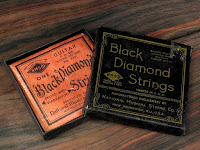 |
| Ed Sullivan and the Beatles 1964 |
In 1964 the Beatles made their first United States appearance on the Ed Sullivan television show. At that time I was 13 years old and like kids of that era, I had to have a guitar.
 |
| Harmony Patrician |
My Dad relented and bought me a late 1940’s era Harmony Patrician archtop acoustic guitar from a local pawn shop for $20.00. The salesman that sold it to Dad said, “Well you need a couple of things to go along with that guitar. You need a pitch pipe to tune it and you need an extra set of string, ‘cause that kid is going to break ‘em.” For an extra two bucks, I got a pitch pipe and a new set of Black Diamond guitar strings.
 |
| Black Diamond Strings Set |
I had not thought much about those strings until last week when I turned on a local radio station that plays a variety of diverse music. That day they were playing Country music by some unfamiliar artists.

Tom Petty, the rock-and-roll star from Gainesville, once wrote a song called “Dreamland.” Here are the opening lines:
Goin’ down to Lillian’s music store
To buy a black diamond string
Gonna wind it up on my guitar
Gonna make that silver sing

Guy Clark, a country troubadour from Texas, wrote a song called “Black Diamond Strings.” Here’s the chorus:
Black Diamond Strings on a Catalog guitar
That’s pretty high cotton whoever you are
You break one you change one, that’s as good as it gets
You can play all year long on two or three sets

Larry Cordle, a bluegrass singer from Kentucky, also wrote a song called “Black Diamond Strings.” Here are the closing lines:
Before I left Faye Ellen to chase my hillbilly dream
All it took to make me happy was this old box and Black Diamond strings.
Three songs, in three genres, describe one thing that generations of American guitarists had in common: Black Diamond Strings.
The strings were cheap, they were durable and they were distributed throughout the country.
Hippie folk singers in California strummed Black Diamond strings. So did funky bass players in Detroit. And legendary bluesmen from Mississippi.
Which is odd, because I recall how difficult it was to play guitar with those thick heavy gauge old Black Diamond strings.
The strings on the neck on that old Harmony were probably a good half an inch above the neck at the 12th fret.
And when I put them on my first electric guitar, a late 1950’s Fender Stratocaster, the bridge saddle and block raised off the neck, which was great because the vibrato pulled up and down. But bending notes was another thing with those heavy strings. And talk about sore fingers and calluses!
 |
| 1960's Gibson Guitar Strings |
I was not aware that both Gibson and Fender sold their brand of strings until a few years later. And it would be another ten years or so before Ernie Ball started putting string sets together with light and ultra-light gauge strings.
As we were kids, we had no idea that professional players were discarding the sixth string and replacing the first string with a .009 banjo string and then using the remaining five strings.
 |
| Bell Brand Strings |
The Standard Musical String company was owned by a Mr. Alexander Paul, who had already been making his own brand called Black Diamond strings. The last partner was a Mr. George Dow Emerson, who owned yet another a string factory in New Jersey. These men got together to form the National Musical String Company
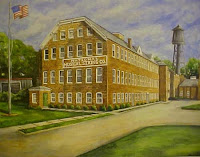 |
| National Musical String Co. 1898 |
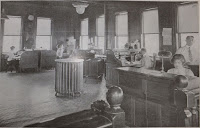 |
| NMSCO office |
Interestingly enough advertisements for employment went out looking for mostly women employees. By 1899 the partners purchased another manufacturer called the American String Company.
 |
| Black Diamond stamping plates |
This was in 1932 and the National Musical String Company was then bought by C. Bruno and Son Incorporated and James and Frank Gibson, who owned the Gibson String Company (which was not associated with Gibson Guitars).
 |
| Christian Martin |
The partnership only lasted a year and both men went their separate ways, with Martin building guitars and Bruno selling musical instrument as a wholesaler.
 |
| C.Bruno and Son catalog |
Bruno and Son was eventually purchased in 1970 by the Kaman Music Corporation (Ovation Guitars) and renamed the Kaman Musical String Company. The business was moved from New Jersey to Kaman’s headquarters and factory in Bloomfield, Connecticut. Kaman Music's origins date to the mid-1940s and a young aerospace engineer named Charles H. Kaman. Kaman had grown up in Washington, D.C., the son of a German immigrant who worked as a construction supervisor on projects like the U.S. Supreme Court building.
 |
| National Musical String Co - today |
 |
| Black Diamond Strings - circa 1965 |
As I recall Black Diamond strings were sold in a black cardboard container with six individual reddish packs, each containing a string. The gauge of the string was not listed on the box or the pack, but instead it said B or 2nd Steel or E or 1st Steel. All I can say is they were heavy strings.

 |
| Individual strings |
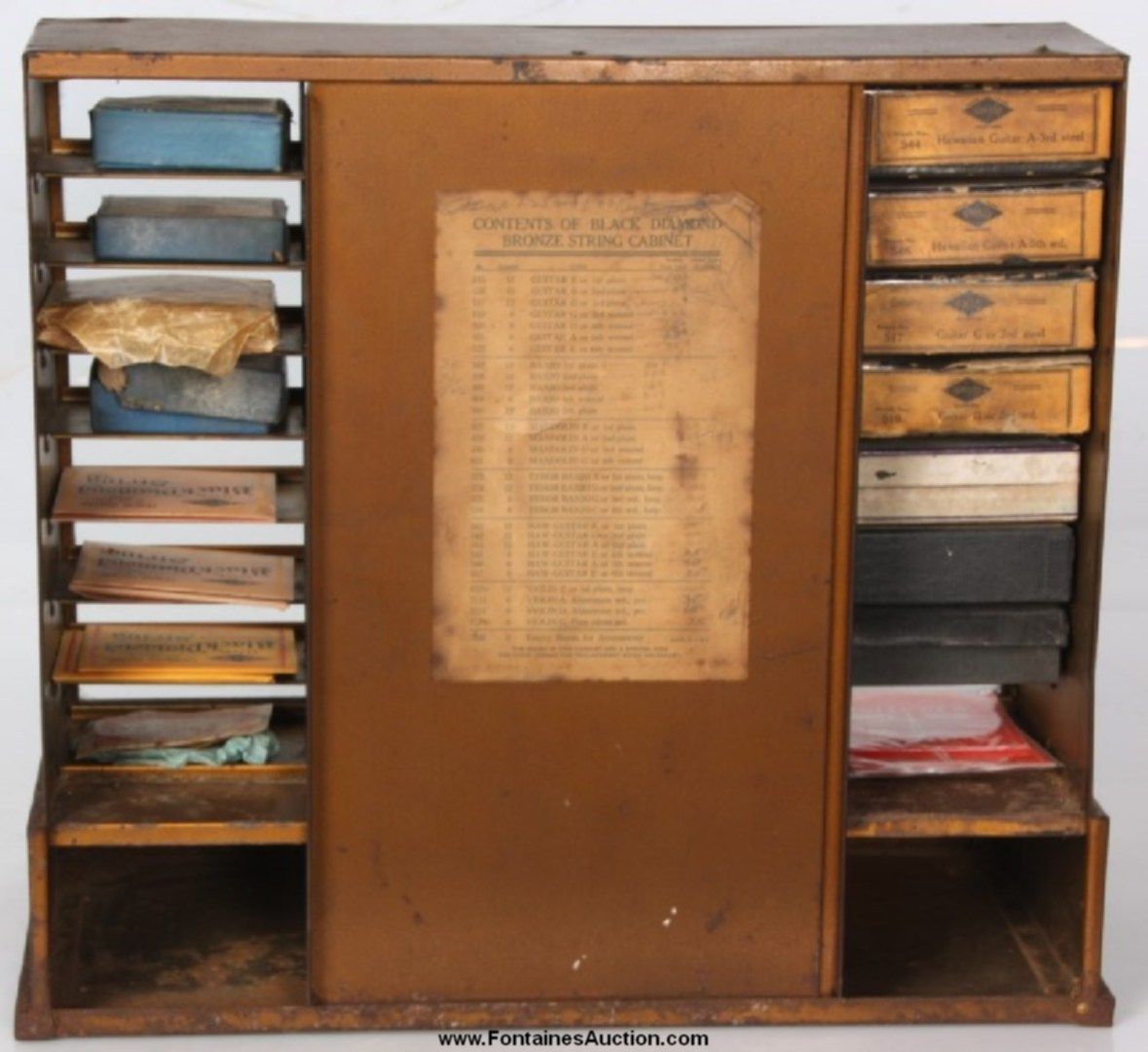
The National Musical String company made strings for guitars, Hawaiian guitars, banjos, mandolins and other instruments. I have also come across Black Diamond electric guitar strings that were made in later years.
 |
| Display Case for individual strings. |
Back in the mid 1960’s most players that I knew did not purchase a new complete set of strings. More often than not if a string broke or sounded dead, we went to the music store and bought an individual string and those stores all stocked individual Black Diamond strings.
I was not certain if Black Diamond strings were still available and being curious I learned that in 1930 Ed Wackerle of Chicago, started a company to manufacture strings for bowed instruments. He was upset with the quality of strings being offered at the time. To achieve quality he put together an endorser panel; a group of players that would test the strings and suggest improvements. He came up with stainless steel strings and marketed them under the Red Label brand.
By 1972 a research and development department was set up to further enhance the strings quality. Out of this came the Old Fiddler Line of strings for Country, Western and Bluegrass players.
Improvements were made on cello and bass strings with the Supreme Line. The business was renamed the Super-Sensitive Musical String Company. In 1997 the grandson of the company’s founder took over the reigns and introduced computerized manufacturing.
 |
| John and Jim Cavanaugh |
And in 2001 the Cavanaugh family purchased the name and trademark of the National Musical String Company/Black Diamond Strings. Once again, Black Diamond Strings are available, although under a new manufacturer with a high quality than ever before.
The legacy continues...

In May of 2013, The Sfarzo Guitar String Company LLC completes its acquisition of the former D'aquisto guitar string factory out of Long Island, New York. Since 1984, The Sfarzo Guitar String Company of San Francisco, California focused on boutique hand-made musical strings directed toward touring musicians.

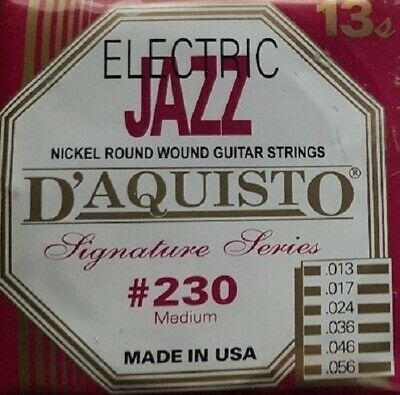
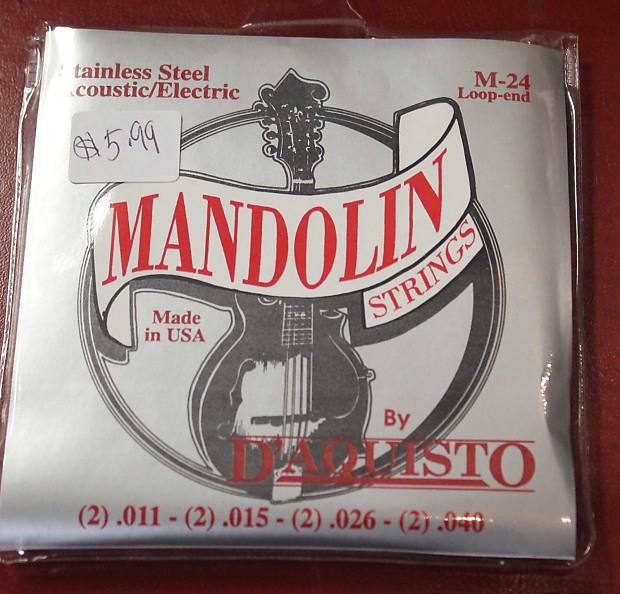
D'Aquisto Company history
James D'Aquisto was born on November 9, 1935 into a musical Italian family. An aspiring jazz guitarist he visited luthier John D'Angelico's guitar shop in 1951 which lead to him in 1952 becoming his apprentice.

About his routine, D'Aquisto said,
"I was making $35 a week. I was like the runner: I'd go to the stores, pick up the tuners, go get the tailpieces from downtown, take the necks to the engraver, all that. I cleaned the windows, swept the floors, everything—we all did that. On Friday we put away the tools and cleaned the shop so when Monday came the place would be spotless."
Later, he learned the "rough work" of the D'Angelico style.
D'Angelico had a heart attack in 1959 and also parted ways with his long time employee Vincent "Jimmy" DiSerio. As a result he closed the business but soon reopened it after D'Aquisto who was unable to find work, convinced him to do so.
After several more heart attacks and having also suffered from pneumonia John D'Angelico died on September 1, 1964 at the age of 59. Following D'Angelico's death the last ten of his guitars were finished by D'Aquisto. D'Aquisto bought the business but a poor business decision lost him the right to the D’Angelico name.
D'Aquisto then continued building guitars under his own name. In 1966 he moved to Huntington, Long Island, then to Farmingdale in 1973, and finally Greenport in 1980.
He felt he would die at the same age as his mentor, and this did occur on April 17, 1995 when he was 59.
D'Aquisto's name is on many guitar models from the Fender "D'Aquisto Elite" "D'Aquisto Ultra" and the Hagström Jimmy. His blue "Centura Deluxe" was the inspiration for the book Blue Guitar. His guitars have sold for tens of thousands of dollars to over $500,000. One of his guitars was the first to be worth a million dollars.[6][8]
In 2006, D'Aquisto was inducted into the Long Island Music Hall of Fame. His tools and work bench, passed down to him from D'Angelico, were given to the National Music Museum.
In 2011, guitars by D'Aquisto were included in the 'Guitar Heroes' exhibition at the Metropolitan Museum of Art in New York City.[9]
Sfarzo Guitar String Company LLC completes its second factory acquisition of the legendary brand, Black Diamond Strings.

Honoring to carry on the tradition to manufacture Black Diamond Brand Guitar Strings. Sfarzo Guitar String Company, LLC had arranged to procure the exact winding machines and wrap formulas Jim Cavanaugh and his family have expertly crafted.
“After conducting an extensive search to find the right company to take over Black Diamond Strings and it's customers, we certainly feel we have found that with Greg Sfarzo,” said Jim Cavanaugh of Super Sensitive Musical String Company.
Now owned and operated by Greg Sfarzo, Greg acquires his second string manufacturing company, the Legendary Black Diamond String Company from the Cavanagh's Florida based location and moves it to Santa Rosa, California just 60 miles north of San Francisco. Under one large roof, resides one large factory comprised of both acquisitions.
The Sfarzo family
Nicola Sfarzo - Naples, Italy 1903. When Nicola was a child, his family moved from Napoli to Isola di San Pietro in the town of Carloforte, Sardinia, Italy where Nicola’s father was commander of the city prison until he decided to depart for America. At the age of 15, Nicola became a merchant marine and sailed on the ship “ANNA” to America with his mandolin and guitar.
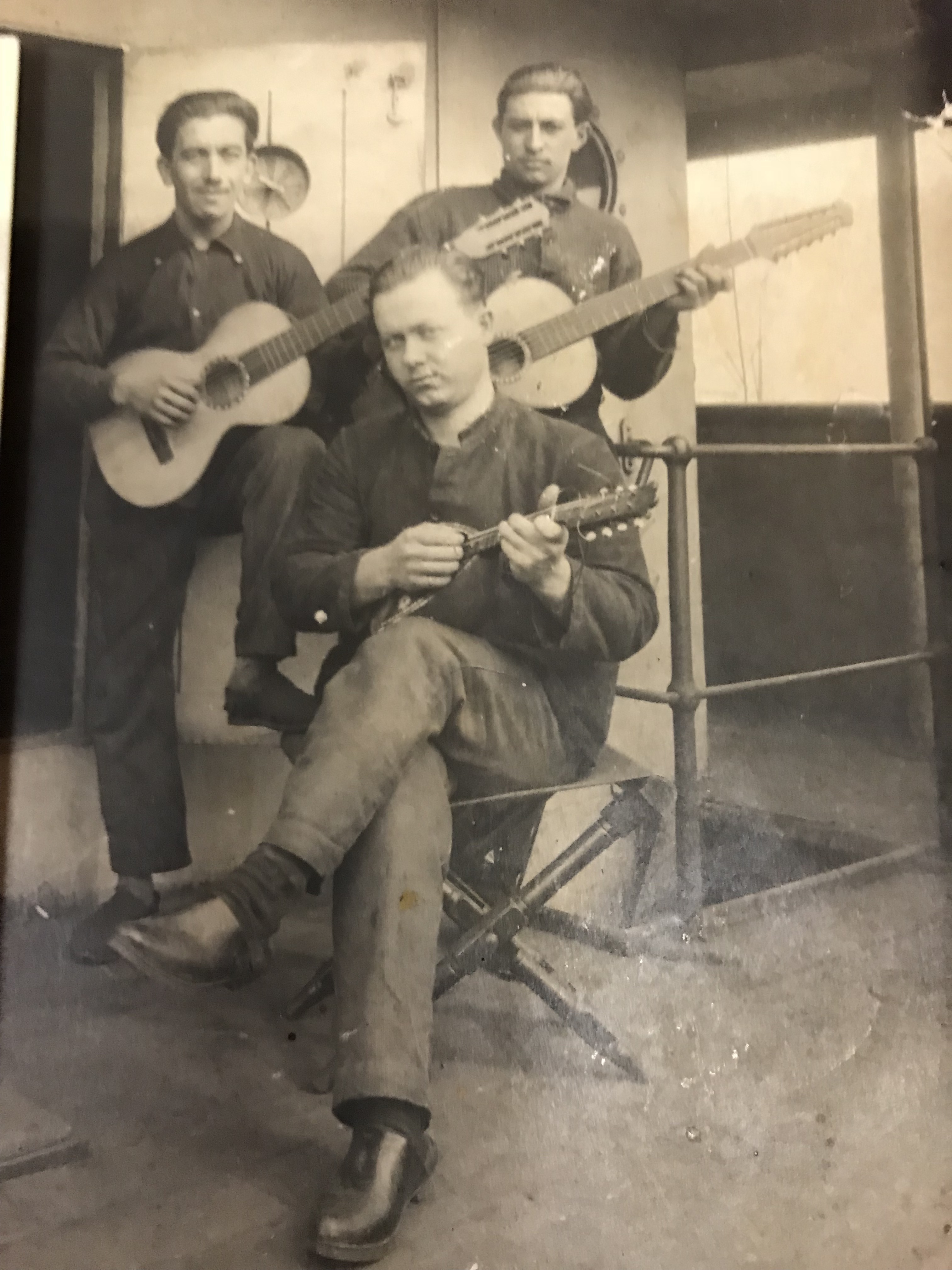
Nicola Sfarzo (circa. 1918)
Angelo Sfarzo, Nicola's son, was born in the early thirties in the North Beach Italian neighborhood of San Francisco. He started playing accordion at an early age of six, then graduated into the piano and organ becoming one of San Francisco’s most well known accordionists. In the early 1950’s, Angelo founded Angelo’s House of Music of San Francisco selling and teaching accordion. Later selling piano and organs, becoming one of the largest organ dealers for the Thomas Organ Company. Angelo had two younger twin brothers, Don and Ron.

Angelo Sfarzo (circa 1935)
Ron Sfarzo started playing accordion at the age of six, becoming an accomplished arranger-composer and multi-keyboardist. Ron was a concert artist and sales managers for the Baldwin, Lowery and Wurlitzer Piano and Organ Companies. Ron was also a member of the National Piano Manufacturers Association and the National Association of Music Merchants. Ron formed the Nicola Brand String Company in memory of his father, Nicola Sfarzo in 2017.
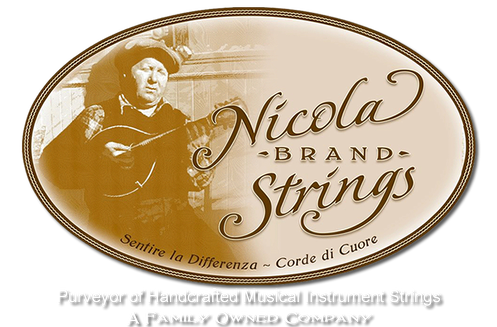
Don Sfarzo was Ron’s fraternal twin brother. In 1979, Don founded DRUM WORLD in San Francisco. It was one of the most famous retail drum stores in the United States. Most big name drummers performing or visiting San Francisco would always drop by.
Since 1890, a lot has changed. Today we have sophisticated winders, stronger materials and better technology to utilize. But yes, Black Diamond Strings is the same brand that has played a huge part in the lives of prior generations.
More to come ...
CONNECT WITH US


